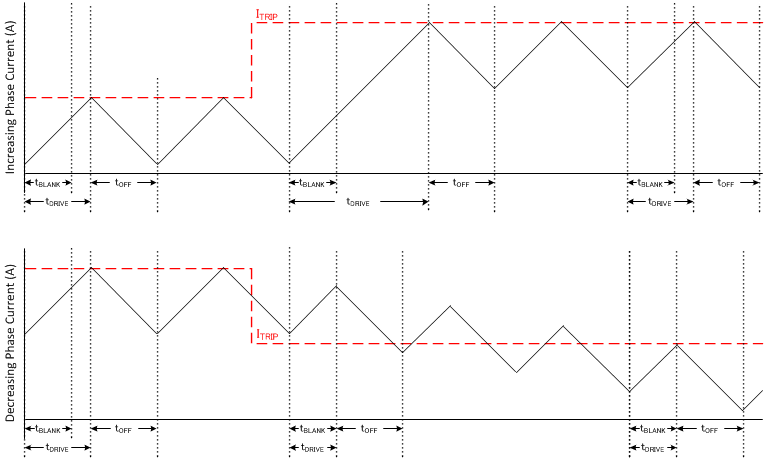SLVSFF0B June 2020 – July 2022 DRV8436E
PRODUCTION DATA
- 1 Features
- 2 Applications
- 3 Description
- 4 Revision History
- 5 Pin Configuration and Functions
- 6 Specifications
- 7 Detailed Description
- 8 Application and Implementation
- 9 Power Supply Recommendations
- 10Layout
- 11Device and Documentation Support
- 12Mechanical, Packaging, and Orderable Information
Package Options
Mechanical Data (Package|Pins)
Thermal pad, mechanical data (Package|Pins)
- RGE|24
Orderable Information
7.3.4.3 Fast Decay
 Figure 7-8 Fast/Fast Decay Mode
Figure 7-8 Fast/Fast Decay ModeDuring fast decay, the polarity of the H-bridge is reversed. The H-bridge will be turned off as current approaches zero in order to prevent current flow in the reverse direction.
Fast decay exhibits the highest current ripple of the decay modes for a given tOFF. Transition time on decreasing current steps is much faster than slow decay since the current is allowed to decrease much faster.